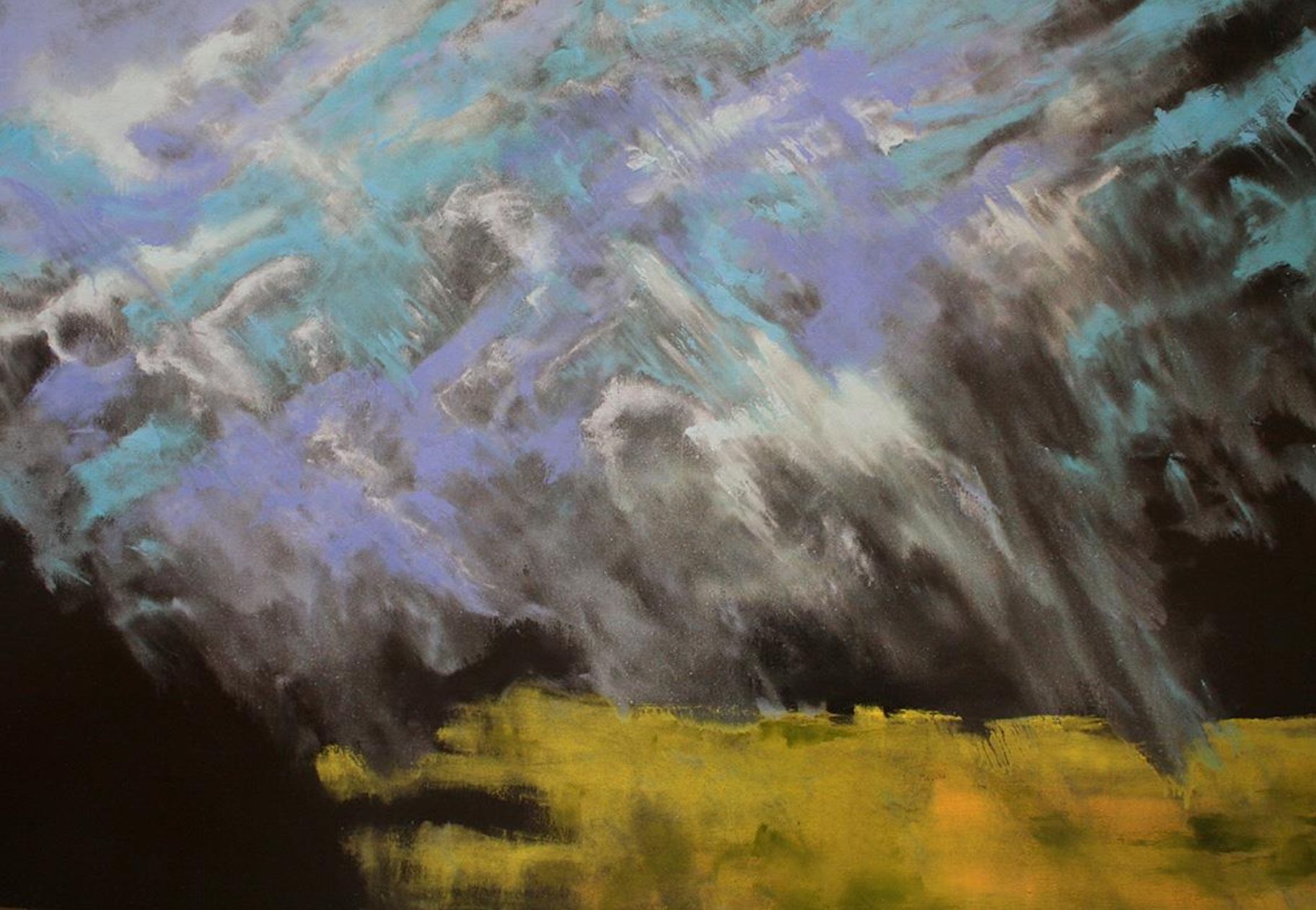There is a lot more to the landscapes of South India than Hampi, which is frequently depicted by artists. Here's a more in-depth look.

Western Ghats by Milind Nayak. (Supplied)
There are plenty of places in India that have been muses for artists over the years.
Some, like Banaras or the Himalayas, stand out for frequently appearing on the canvases of artists, be it MF Hussain or Nicholas Roerich.
Down South, Hampi has been a continuous source of inspiration for its unique rock formations, the Tungabadra River, and the world-famous temple ruins — notably the magnificent stone chariot.
However, Southern India has other vistas that have been depicted by master artists as well as senior and emerging artists.
We take a look at some of the paintings that depict a Southern scene, be it through a place or its people.
Looking at Bengaluru today, you may find it hard to believe that it was known for its beauty.
Few have captured Bengaluru on canvas as beautifully as artist Rumale Channabasavaiah, who was born not far from it — in Doddabalapur — in 1910.
He was a master of watercolours, and used them unconventionally with opaque applications instead of the standard transparency.
Some of his famous works of the city were commissioned by the Karnataka government, and his oeuvre has the now-busy KR Circle, the iconic red building of the high court, Cubbon Park, and more.
The city has rarely looked as beautiful as it did in his paintings.
Rumale also painted landscapes of the places he visited in and around Karnataka, which means a study of his oeuvre would show a lot more of the state, like the Kudala Sangama in Bagalkot, the source of Kaveri — where the river enters the neighbouring state of Tamil Nadu.
Artist N Hanumaiah’s mastery in depicting the city of Mysuru was evident in his landscapes.
He painted the Mysore Palace in a night depiction where the splendour of the brightly lit building is palpable.
Be it the lit-up Brindavan Gardens, Chamundi Hills, the Dusshera celebrations, or just the city lights at night, Hanumaiah was able to cast his magic with well-rendered oil paints.
He also painted nearby destinations like Srirangapatna and other scenic spots as well.
In today’s crop of artists, VG Venugopal has works showing off Bengaluru’s green jewel — Lal Bagh.
The greenery of the state has inspired several artists, who have depicted Kerala and its culture in different ways.
Master artist KK Hebbar painted a series on Kerala after a study tour to the state.
He depicted the landscapes of Malabar and Tulu Nadu as well.
His daughter, artist Rekha Rao, followed his legacy and painted scenes from the state in her style.
Both of their paintings are exceptional and insightful.
Amongst the emerging artists, Mohammed Rizwan’s paintings of Kerala’s lifestyle are eye-catching for their warmth and bright compositions.
The hill stations of the Western Ghats are known for their natural beauty.
One of Karnataka’s famous artists, K Venkatappa, was known for his landscapes of Ooty and Kodaikanal back in the 1930s.
Incidentally, none other than Mahatma Gandhi was impressed by the landscapes when he visited Mysuru.
Gandhi, like the others, was left admiring the artist’s attention to detail and his mastery of line and colour.
This place was the capital of the Badami Chalukyas and is known for its Hindu and Jain cave temples.
The landscapes of Badami have been painted by several artists, from reputed artist-educator RM Hadpad to JMS Mani, who showcased the people of Badami.
The former, who founded the Ken School of Art, lived in Badami as a child and drew inspiration from its rocky terrain.
JMS Mani’s Badami series is instantly recognisable because of the colourful depiction of the village people, from fruit vendors to flower sellers.
Another emerging artist, Manjunath Wali, has been portraying the historic landscapes of the area in a dramatic fashion.
His watercolours continue to stress the beauty of the artist’s southern muse.
Technically, the paintings of KR Santhana Krishna are not landscapes, but they do offer a glimpse of life in Kumbakonam.
The artist is known for painting real door scenes from a typical home in Kumbakonam, earning him the moniker Door Santhanam.
His inspiration is actually his grandmother’s house, which had 82 doors.
Artist Bhavani GS is known for her work on Coorg, where she grew up, as well as her fascination for the Cauvery River.
Her paintings come alive with the flora and fauna of Coorg, including the famous coffee blossoms which flower just for two weeks in the month of March or April.
When it comes to the Western Ghats, artist Milind Nayak’s paintings on the rains in the hilly region are colourful abstract leitmotifs which come alive with the power in them.
Hampi has been showcased by almost every artist who passed through it.
They include master artist GS Shenoy, who painted landscapes of other places and notably Hampi, to his son Gurudas Shenoy, whose abstract landscapes are vibrantly alive.
Talking of Hampi, it is only fair to mention Robert Geesink, the Dutch artist who became its longtime resident till death.
His colourful landscapes showed Hampi’s residents with a closeness that the artist felt towards them.
While the origins of the Dravidian people are technically indigenous to the Indian subcontinent, South Indians are considered to be having Dravidian roots.
At the fore is artist Elayaraja, who depicted the life of Dravidian women with scintillating clarity and realism.
He died an untimely death due to Covid-19, but his paintings live on to showcase a lifestyle instantly recognisable to South Indians.
They depict women going about their daily routine, and capture every detail perfectly: from the glistening gold zari on silks to the traditional jewellery and flowers in the hair.

May 01, 2024

May 01, 2024

May 01, 2024

May 01, 2024

May 01, 2024

May 01, 2024